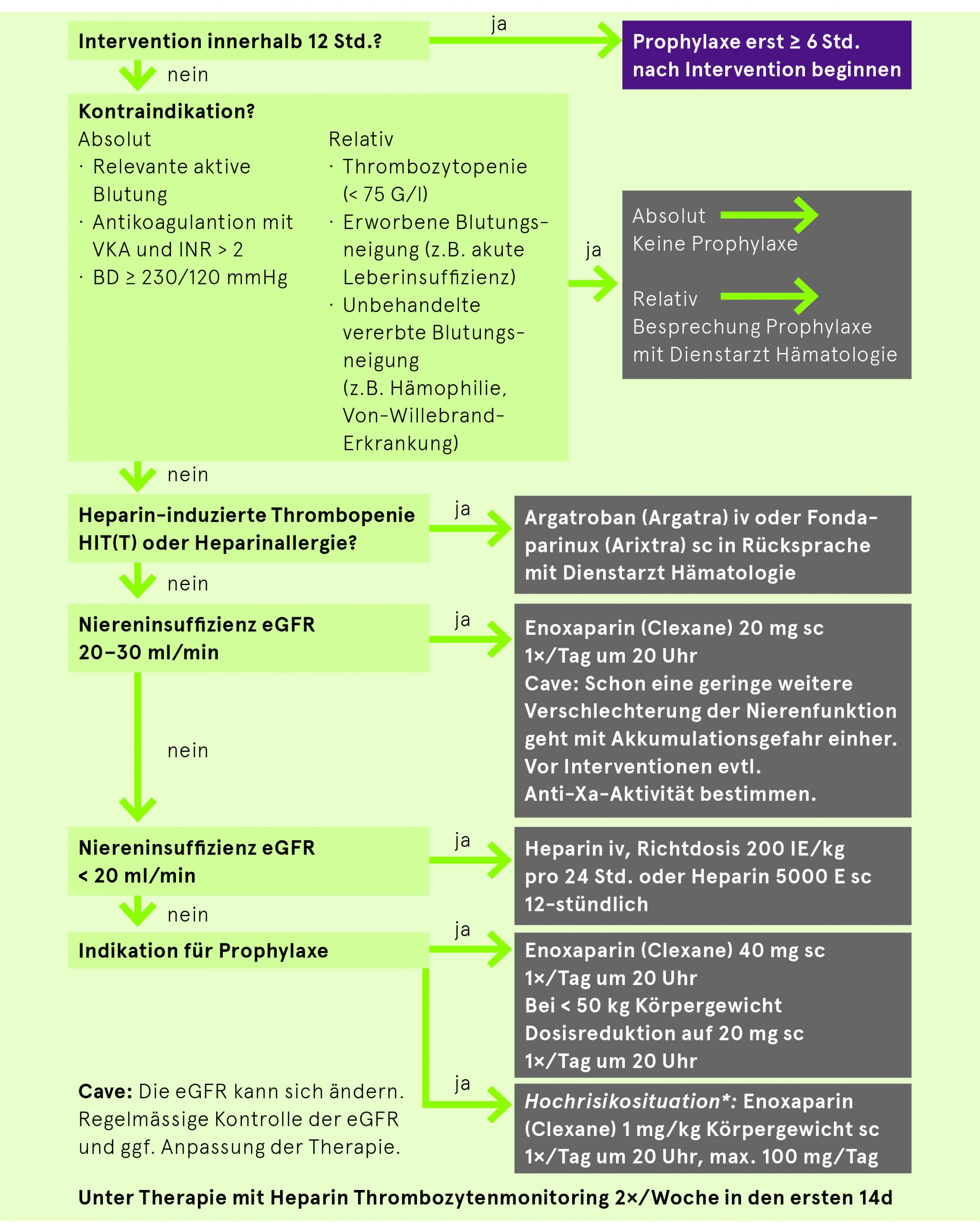Thromboembolieprophylaxe in der Medizin
In der Regel ist bei hospitalisierten Patienten eine Prophylaxe indiziert!
Risikofaktoren: Hospitalisation + ≥ 1 Risikofaktor: > 60 Jahre, BMI > 30 kg/m2, Malignom, Intensivpatient, Dehydratation, Hormontherapie, Phlebitis, kardiale, metabolische, endokrine, respiratorische, infektiöse oder entzündliche Erkrankung. Signifikant reduzierte Mobilität = Patienten, die bettlägerig sind, die nicht allein gehen können oder einen substanziellen Teil des Tages nur im Bett oder auf einem Stuhl verbringen.[1]

Prof. Dr. Miodrag Filipovic,
Dr. Pamela Honold-Schneider, Prof. Dr. Wolfgang Korte,
Dr. Stephanie Potz, Prof. Dr. Hans Rickli
- J. Thromb Haemost 2008;6:2082–2087 ↵